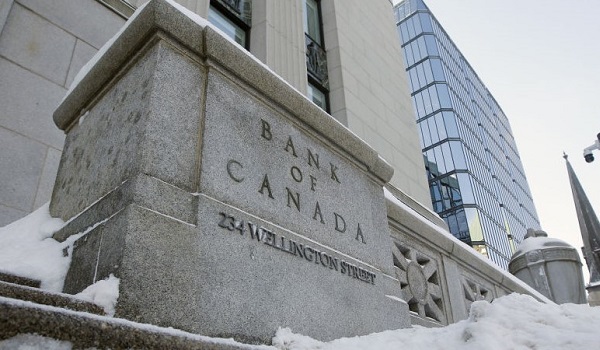Bank of Canada to stop its quantitative tightening program in few months, RBC says
The Bank of Canada is likely to wrap up its quantitative tightening program as early as April, sooner than policymakers had previously indicated, according to RBC Capital Markets strategists.
The central bank under Governor Tiff Macklem has been shrinking its balance sheet for about two years, withdrawing the extraordinary stimulus it provided during the worse phase of the Covid-19 shock. Its assets have tumbled to around $313 billion from a peak of more than $570 billion as it allows government bonds it holds to mature, draining liquidity from the financial system.
That’s about to end, however, and officials will probably return to a “stable balance sheet policy” in conjunction with its April 10 rate decision, Simon Deeley, RBC’s director of Canada rates strategy, said in a note to investors. That means it will resume buying Canadian government bonds to replace those coming due.
At the very latest, “quantitative tightening ends at a similar time as the first rate cut,” which RBC strategists think will be in June, Deeley wrote.
Target rate
Bank of Canada Deputy Governor Toni Gravelle said last March that policymakers expected to wind up quantitative tightening in late 2024 or early 2025. But indicators in short-term funding markets have led analysts to speculate that the move will be accelerated.
The Bank of Canada conducts monetary policy by setting a target for the overnight lending rate, which has been at five per cent since policymakers last raised it in July. Overnight funding in the repo market is supposed to hug that mark closely.
In recent months, however, the Canadian Overnight Repo Rate Average, known as Corra, has become detached from the Bank of Canada target. Corra has settled as high as 5.07 per cent as liquidity dries up.
Macklem has said demand for bonds is a cause of the liquidity issue. The global bond rally has squeezed short-term funding markets because participants are rushing to lock in higher yields on fixed-income securities ahead of expected declines in interest rates, he told lawmakers on Feb. 1.
The Bank of Canada has a target of two per cent inflation, within a control band of one per cent to three per cent. The rate of inflation was 3.4 per cent in December, but Macklem and other policymakers see it continuing to decelerate.
This article was reported by BNN Bloomberg











